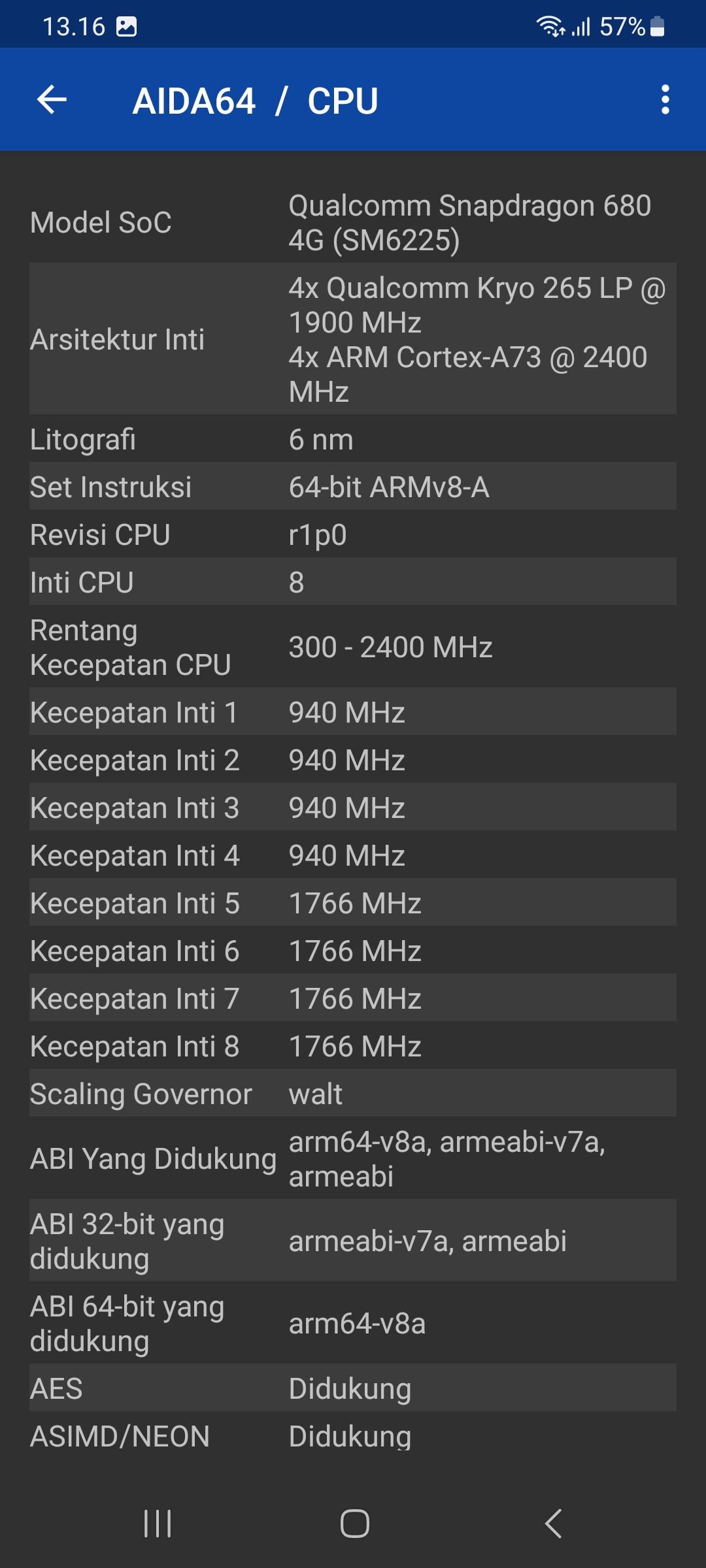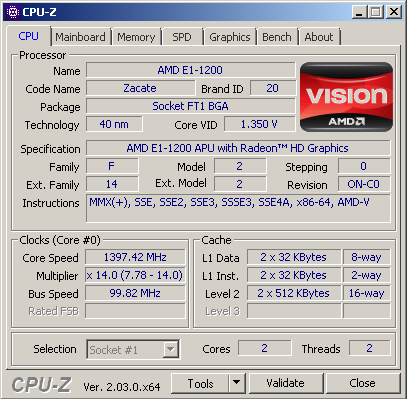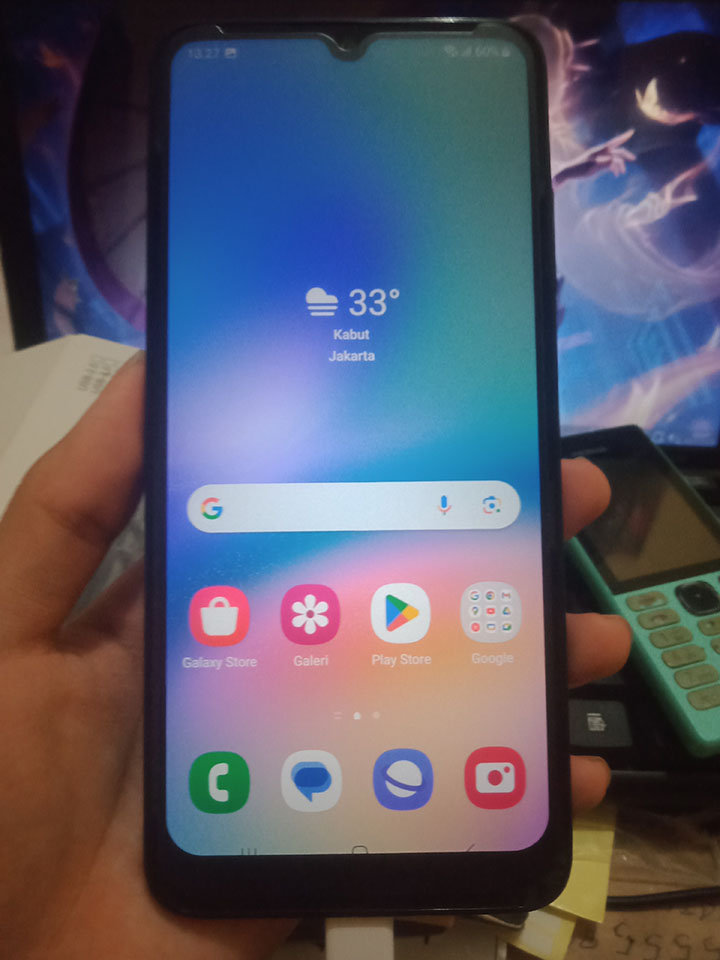Comparing: AMD E1-1200 vs Qualcomm SM6225 Snapdragon 680 4G
In this comparison, we analyze two Processors: AMD E1-1200 and Qualcomm SM6225 Snapdragon 680 4G, using synthetic benchmark tests to evaluate their overall performance. This side-by-side comparison helps users understand which hardware delivers better value, speed, and efficiency based on standardized testing. Whether you're building a new system or upgrading an existing one, this benchmark-driven evaluation offers valuable insights to guide your decision.

Qualcomm SM6225 Snapdragon 680 4G
| Type: | Processors |
|---|---|
| Brand: | Qualcomm |
| Model: | Snapdragon 680 4G |
Specification Comparison Table
This specification comparison presents technical details of several devices or components to help you understand the key differences between each option. Use this table as a reference to determine which device best suits your needs.
| Specification | AMD E1-1200 | Qualcomm SM6225 Snapdragon 680 4G |
|---|---|---|
| Architecture | x86 | ARM |
| Technology | 40 nm | 6 nm |
| Clock | 1.4 GHz - - | 1.8 GHz - 2.4 GHz |
| Core/Thread | 2 / 2 | 8 / 8 |
| Segmen | Mobile | Mobile |
Submission Comparison Table
This submission comparison table displays the number and details of benchmark data submissions from various devices or components. This information helps you understand the performance based on the benchmarks that have been tested, as well as providing an overview of the consistency and popularity of the available benchmark results.
| No. | Benchmark Software | AMD E1-1200 | Qualcomm SM6225 Snapdragon 680 4G |
|---|---|---|---|
| 1 | Geekbench3 - Multi Core |
1050 points |
8267 points |
| 2 | Geekbench3 - Single Core |
575 points |
2027 points |
| 3 | Geekbench4 - Multi Core |
1240 points |
6470 points |
| 4 | Geekbench4 - Single Core |
737 points |
1831 points |
| 5 | Geekbench5 - Multi Core |
255 points |
1624 points |
| 6 | Geekbench5 - Single Core |
132 points |
384 points |
| 7 | Geekbench6 - Multi Core |
193 points |
1424 points |
| 8 | Geekbench6 - Single Core |
107 points |
415 points |
| 9 | PassMark - PerformanceTest (CPU Mark) |
473 marks |
5204 marks |
Submission Comparison Chart
This chart visualizes the benchmark scores comparison between two hardware devices based on submitted data.
Media Gallery
A collection of photos of tested hardware. These images can help you identify the physical form, model, and variant of the hardware in question. These photos are from our own documentation, and if they are not available we may not be able to document them.
About Hardware AMD E1-1200
Released in 2012 as part of the Brazos 2.0 family, the AMD E1-1200 is a power-efficient processor aimed at entry-level laptops. It has a 2 core and 2 thread configuration with a fixed clock speed of 1.4 GHz, with no support for Turbo Core technology. Built with a 40nm fabrication process, the E1-1200 has a TDP value of 18 watts-efficient enough for portable devices that emphasize low power consumption and longer battery life. Despite its limited performance, the E1-1200 was a popular choice in its day thanks to its affordable price and ability to handle light computing needs.
One of the main advantages of the AMD E1-1200 is the integrated Radeon HD 7310 GPU, which offers better graphics performance than Intel's entry-level graphics solutions at the time. This GPU has the ability to play HD resolution videos smoothly, as well as run light games such as Counter Strike 1.6, Plants vs Zombies, or other casual games with minimum graphics settings. That said, this combination of CPU and GPU is not intended for heavy-duty work such as video editing, 3D rendering, or modern gaming. Overall performance is more optimal when used for tasks such as browsing, streaming videos, accessing social media, typing documents, as well as basic office applications.
However, it should be noted that the AMD E1-1200 is less suitable for heavy multitasking, especially in modern operating systems like Windows 10. With a low clock speed and no Boost feature, users may experience lag or limitations when opening multiple applications at once. In tests using the HP 1000 1b05au laptop, this processor was paired with 4GB DDR3 single channel RAM (2 DIMM slots) and tested on Windows 7, Windows 8, and Windows 10 operating systems. The results show that the most optimal performance is achieved on Windows 7 or Windows 8, while in Windows 10 the system tends to be slow although it can still be used for basic needs. As such, the AMD E1-1200 can still be relied upon as a power-efficient and inexpensive solution for users with very light computing needs.
Hardware Detail:
Device: HP 1000 1b05au
RAM: 4GB DDR3 Single Channel 2 DIMM
OS: Windows 7, Windows 8, Windows 10
Wednesday, 26 December 2012 14:27:36 | Update: 1 month ago
About Hardware Qualcomm SM6225 Snapdragon 680 4G
Qualcomm SM6225 Snapdragon 680 4G is a mid-range processor designed to deliver efficient performance with low power consumption. Built using a 6nm fabrication process, this chipset is able to provide an ideal blend of speed, power efficiency, and stability, which is perfect for smartphones and tablets in the entry-level to mid-range class.
Snapdragon 680 carries an octa-core CPU configuration, consisting of 4x Kryo 265 Gold (Cortex-A73 based) and 4x Kryo 265 Silver (Cortex-A53 based), providing a smooth multitasking experience and good enough performance for light to medium gaming. In terms of graphics, the chipset is powered by the Adreno 610 GPU, which is capable of handling multimedia needs such as high-resolution videos and casual games quite well.
In terms of connectivity, the Snapdragon 680 supports 4G LTE networks and includes Qualcomm AI Engine, which helps improve camera processing, voice recognition, as well as power management efficiency. Not to forget, the presence of Qualcomm Spectra 346 Triple ISP enables better image processing, including camera performance in low-light conditions and multi-camera configurations.
The test was conducted using a Samsung Galaxy A05s device, powered by Snapdragon 680, with a configuration of 6GB RAM, 128GB UFS storage, and Android 13 operating system with One UI 5.1. The test was conducted under new device conditions, using default settings, and an ambient room temperature of 30°C based on the DHT11 sensor.
The results of CPU performance testing on the Snapdragon 680 chipset show quite good numbers in the mid-range. Through AnTuTu Benchmark version 10, the CPU score obtained reached 105,662 points, while in the previous version, AnTuTu Benchmark v9, the score was recorded at 82,391 points. Testing with Geekbench 6 also gave a balanced performance picture, with 415 points for single-core and 1,424 points for multi-core. These scores show that the Snapdragon 680 is capable of providing a smooth usage experience for everyday needs such as multitasking, browsing, and running popular apps efficiently.
These results show that the Snapdragon 680 is a solid choice for users who want stable and efficient performance on a mid-range Android device, whether for daily use, content consumption, or light gaming.
Device Test:
Device: Samsung A05s
Specs: Snapdragon 680, 6GB RAM, 128GB UFS, Android 13
Room Temperature: 30 celcius based on DHT11 Sensors
* Testing was carried out when the device was in new condition, with the latest operating system update, One UI 5.1, default settings
Thursday, 11 January 2024 23:04:13 | Update: 1 month ago




